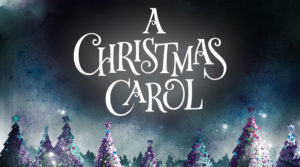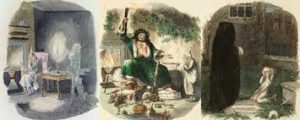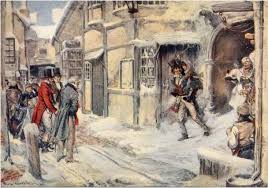
The Ghosts That Mentors For A Cursed Man: An Analysis of A Christmas Carol By Charles Dickens
The ghosts probably are the most of terrifying things for some humans. They are evil, annoying, irritating creatures in the genres. If you ask someone who loves following fictions, he or she might claim that ghosts are the antagonist in the stories. This is not exactly true whereas some ghosts are as kind as an angel or as friendly as a dog. The great example for this approach is A Christmas Carol by Charles Dickens. Charles Dickens imagined his ghosts as the mentors who have goal to guide a cursed life by reminding the truth of happiness rather than showing their goal to cursed someone’s ordinary life. There are two question in my head: First, what did Charles Dickens explain us? Second why does it matter? In my perspective, I need to answer these questions by diving the parts of story like witting part of the story and unwitting part, the hidden meaning of the story. Witting parts of the story can be justified in terms of summary of the book, metaphors and allegories. On the contrary, the unwitting part of the story is too personal for understanding fully since this is just my theory that I come up with by analyzing the evidence I have found. Charles Dickens tried to achieve creating an awareness that happiness is not associated with wealth; it is all about being a good person who is generous and has the ability to embrace empathy within his or her soul. It is matters since people lost their humanities since greed blinds people to see the gloomy reality they were living in and they cannot stay in that nightmare anymore. Therefore, Charles Dickens veiled the power of storytelling to wake them up from that twisted nightmare and see the light again. The order I will follow is the summary of story for readers who haven’t read the story yet, after that paragraph examining the metaphors of ghosts for covering the witting meanings and the third paragraph will focus on my theory I inspired from the book named “Literary Theory” by Terry Eagleton that explains the concepts of alternative ideologies theory. This theory can guide me to dig the secret parts of story in order to explore the unknown places of Charles Dicken’s mind when he was writing “A Christmas Carol”.
Summary of story requires three elements: Characters, plot and events. If you can understand all of them, you will know what the story is about. Charles Dickens moves his story by using three main characters: Ebezeer Scrooge, Tiny Tim and Jacob Marley. The ghosts have an impact on the story, but I do not consider them as characters. They are more like a vehicle to transforms characters. Ebezeer Scrooge is a lonely man who is consumed by greed and selfishness. Nobody actually likes or misses him. He has a special hatred toward Christmas, since his past is not sunshine or rainbows. He refuses to celebrate this sacred day and donate his money to people who needs it. Before the Christmas, an unwelcomed visitor comes to his door and this visitor is Scrooge’s old partner Jacob Marley. Jacob Marley warns him to escape from his severe fate which is being a selfish miserable man. He also adds three spirits will introduce themselves to him and teaches some lessons about life. These three ghosts assist him to find true purpose of life and think past, present and future like a straight bridge. Furthermore, Tiny Tim situation reveals the motivation of our protagonist and possible outbreaks of the story. At the same time, theme of the story rise on the surface: Change and hope. Concluding the three vital structure of story leads me to identify the metaphors of ghosts and unlocking the door of memory, charity and fear.

Metaphors are exhibitions of the way how people question and convey these ideas. In literature, people accomplish to deliver main themes by using metaphors since some beliefs and ideas are terrifying concepts to tell straight forward. Charles Dickens used his metaphors to transforms his themes into a message for solving the greed within human. Ghost metaphors are the most creative exposition to tell the significance of life and it is limited. Each of the ghosts represent another time duration: past, present and future. However, Charles Dickens reminded that they are not separated, on opposite they are united. First, readers meet with the ghost of Christmas past who represents the memory. This ghost makes a journey along with Scoorge to visualize what happened in past and how the past events can influence one’s life and character. Dickens states that some memories might be forgotten regardless of how many years passed (74). The strange thing about memories is they can be the key or savior of our future. We can assume future events by looking at the past. People infinitely neglect or forget what happened in the past, so they continuously do the same mistakes over and over again. Moreover, exploring memories can help explorer to defining the patterns which shows changing in his or her life. The Phantom teaches Scoorge to remember how he was happy in his childhood without wealth and where he came from. He finishes his lecture with hope from the past (82). I think that he also claims that past is the messenger of hope; eventually, everything is past. The second ghost we encountered is the ghost of Christmas present. This spirit possesses the virtues of generosity an empathy. In his lecture, Scoorge engages in the life of poor people and why they earn more due to lack of needs (89). For Charles Dickens’s point of view, people should restrict themselves in consumption as there are other who needs them more than others. So, he pointed that people often ignore other’s conditions and needs. The lesson of Christmas present’s purpose is to motivate Scoorge for empathizing poor persons. By sparking his emotions, the spirit wants to change today. People can turn back the past to change future, but they can change their actions to alter the reality of today. The last spirits we have a chance to meet is the ghost of Christmas comes to yet who is terrifying and symbolizes the death and limited time. Charles Dickens preferred to strengthen his view about meaningless life as putting a reaper to show the fear of Scoorge. Some of the reviews argues that this spirit is a manifestation of “social justice”, but I disagree with them since Scoorge is not a criminal. He is just an old man who is not paying attention other’s wishes. The main point of this phantom is to foresee the outcomes of your selfish actions unless you change them. Scoorge faces with his own death and the comments of other people about him. Nobody mourns or says something special about him as he spent his life without contributing to anything beneficial. The vital message in this section is people only grieve for someone who makes a difference in his or her own life with others.
We reached the part that I need to investigate the hidden evidences. Charles Dickens told us a story that main premise is seeking the true happiness. This happiness is similar to Mill’s greatest happiness principle which has another popular name. They believe happiness has to serve greater good instead of private happiness(99). However, for my humble perspective it is not about utilitarianism, it is highly about changing or showing the negative side of a particular ideology. Terry Eagleton suggests that literature itself is an emergence of a new ideology by the help of human’s imagination(20). It is a possibility that Charles Dickens was inviting a new alternative ideology for waking them up from apathy. In every book analysis, every author agrees with idea that Christmas spirit in the story does not represent the sacred day. Then, what does it mean? Charles Dickens have lived in a period that factory owners or bourgeoise ruled the territory and every privileged actor neglected the significance of labor class. In that story, the trailer of division of labor can be followed by the reader. In addition, Charles Dickens is organized some features of rival ideology in that era such as community, common interests and needs. However, one of Karl Marx’s statement enlightens me : “ The bourgeoise has torn away the family relations to a mere money relation.” (Marx 16). This statement can prove my theory about rival ideology since the structure of story establishes that. Of course, this does not need to be the exact truth, but maybe he observed what capitalist beliefs turn them into and warned them to realize who they are. Therefore, he created the character whose name is Scoorge and his three friends.
To sum up, this essay highlights the issue of A Christmas Carol. It is a great story as it is a strong theme and motivation that reminds people there is always hope even in the darkest times. I again learn that fiction is a very powerful resource to learn your mistakes and improve yourself. I do not like to repeat my sentences, sometimes I may repeat myself, but I am not doing it willingly. I told you that I will stick with rules of essay writing, I guess I cannot keep my promise since I experience something new, something interesting. I am not going to say what that is, but I am going to state that I love inspirational endings. If you haven’t read this story, please read it and rejoice the true meaning of happiness and investigate the secrets I couldn’t reveal.

Note: Like the previous essay, I am going to give some clues about next issue that I will analyze elaborately. Hence, for the sake of not spoiling it, I will just write down a riddle:
“The only way you are a participant of a story,
The story I will evaluate is very creepy,
There are creatures surrounded by the weather,
which is foggy,
The creatures are shaped by your psychology.”
Which story am I ?
My best wishes,
YOK
Work Cited:
Eagleton, Terry. Literary Theory an Introduction. Basil Blackwell, 1983.
Dickens, Charles. Complete Ghost Stories: A Christmas Carol. Wordsworth Classics, 2009.
Marx, Karl. “ Manifesto of Communist Party” Marxists Internet Archive, 1969, https://www.marxists.org/archive/marx/works/download/pdf/Manifesto.pdf. Accessed 27 March 2020.